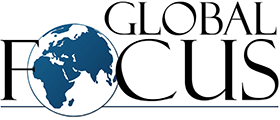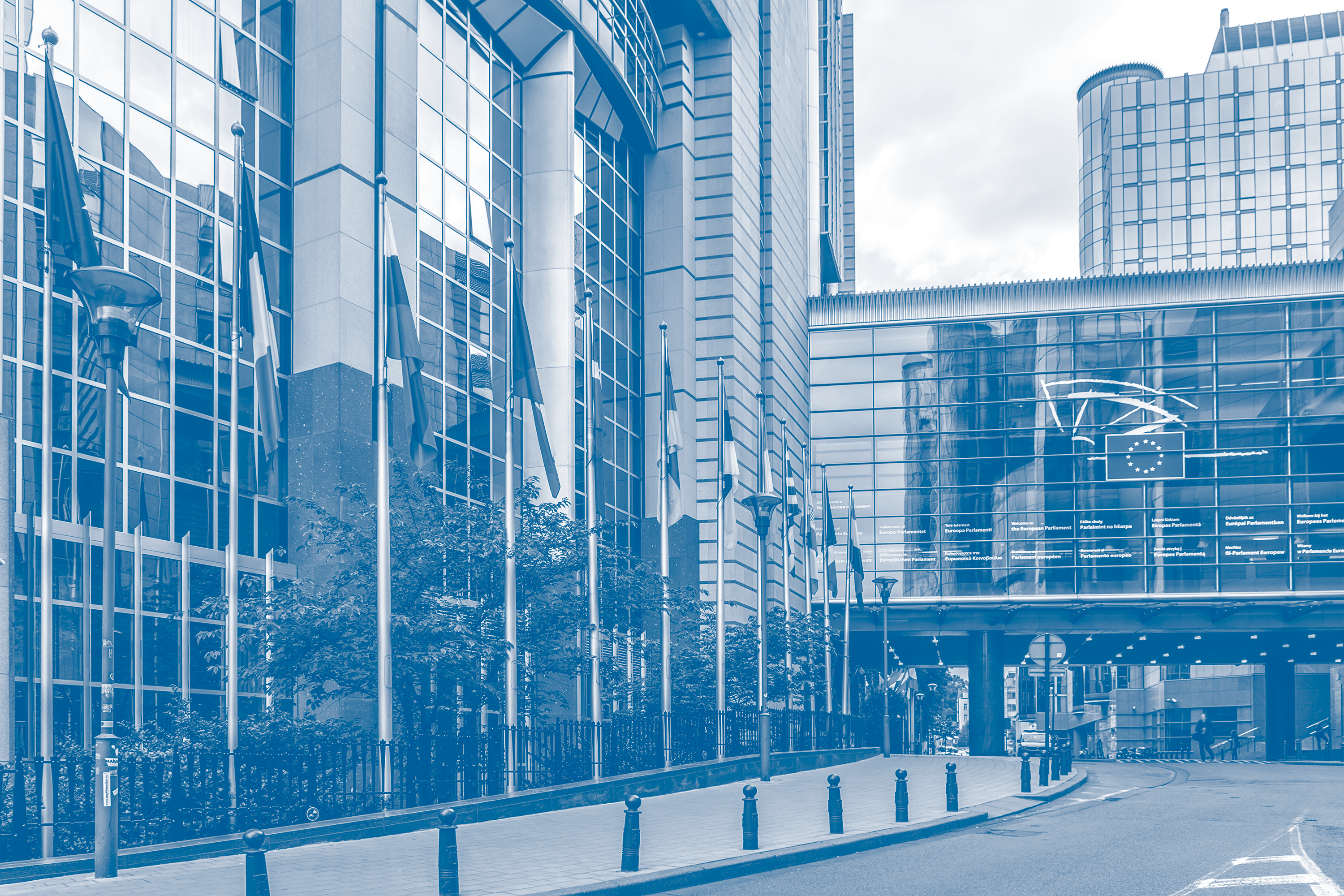By Doru Franțescu | Brussels
The European Parliament (EP) elections in May 2019 will take place in a historically new context. The planned departure of the UK will lead to a shift in the balance of power in favour of the Eurozone countries, which will also influence the shape of European policies in many relevant areas.
To highlight the most important aspects of the upcoming elections, this analysis will discuss the current balance of power in the European Parliament and how the political forces have formed coalitions in order to shape EU legislation. Due to its high level
of heterogeneity and political fragmentation, coalitions in the European Parliament are formed on an ad-hoc basis, meaning that the political majorities change from one vote to the next. Following a broader analysis of political patterns in the EP, this article also examines key trends with regard to the role played by Central and Eastern European decision-makers at the EU level.
Introduction
The upcoming European Parliament elections will take place in an entirely new context. With the UK leaving the European Parliament, the size of the European Parliament will decrease from 751 to 705. Consequently, Central and Eastern European member states will obtain an additional 5 seats whereas member states from other regions will get a further 22 seats. As a result, the additional share of influence which the Central and Eastern European member states will obtain is relatively small in comparison to other countries, especially with regards to the southern European member states, which will gain 9 seats.
Poland will become the fifth and Romania the sixth biggest EU member states after Brexit, and some of their MEPs are already among the most influential in the European Parliament, according to our dedicated study1 on the influence of MEPs. Importantly, most of the MEPs from Central and Eastern European member states are members of the European People’s Party (EPP) and Socialists & Democrats (S&D), which are the biggest groups in the European Parliament, a situation which increases their leverage. Moreover, at the elections in 2014, it was the results in the CEE countries that made the difference, giving a narrow victory to the EPP. This explains why the CEE’s delegations are important to the big EP groups.
However, the overall landscape in the EP is set to change from 2019. The EPP and S&D are both expected to lose a substantial amount of seats in May. As a result, the EPP and S&D will probably not be able to form a majority on their own. Additionally, the opposition to further European integration is likely to increase, due to gains for both right-wing and far-left parties across the continent. One big winner in the next election could be Alliance of Liberals and Democrats for Europe (ALDE), which is expected to gain seats through its cooperation with Macron’s La République en Marche. This group will see its role of kingmaker in the European Parliament strengthened, since the weakened EPP and S&D are likely to seek cooperation with ALDE in order to get a majority.
The EPP and S&D will probably not be able to form a majority on their own.
ALDE will also play an important role during the post-electoral allocation of top posts at the EU level. While the Presidency of the European Commission seems to be out of reach for the centrist group, ALDE will try to leverage its rising influence in order to take the Presidency of another key institution. If the European Council decides to stick to the Spitzenkandidaten procedure (which is not legally binding), the candidate of the strongest party is likely to get priority as the national governments’ pick to replace Jean-Claude Juncker. Assuming that the EPP remains the strongest group after the elections, the current frontrunner is Manfred Weber of the Bavarian Christian Social Union.
Whether Weber will become the next EC President or not, the job is set to become more difficult, due to the increasing political fragmentation within the European Parliament. Although the moderate pro-EU forces will still be able to hold a combined majority of seats, the fringes will get the chance to influence EU legislation whenever divisions within the pro-EU camp arise.
Composition, coalition building and cohesion in the EP (2014-2019)
The fringe forces can count on about 30% of seats (depending on how they are defined). While they cannot win a vote by themselves, they can still swing key votes.
Figure 1 shows the current composition of the European Parliament. With almost 30% of the seats, the EPP is currently the strongest political group. After the EPP, the S&D can count on around 25% of seats. The European Conservatives and Reformists (ECR) with 70 seats and ALDE with 67 seats hold between 8 and 9% of seats in the EP8. While the fringes on the left and the right have been gaining ground since the past elections, their size in the current EP is relatively small. Several coalition formations have been possible within this constellation. Needless to say, most of these combinations have involved the mainstream groups. In most cases (about 68% of times), the EPP, S&D and ALDE have formed a ‘Super Grand Coalition’ which could provide substantial support to EU legislation (over 60% of MEPs belong to the three groups combined).
Nonetheless, the ‘Super Grand Coalition’ has lost significant power in comparison to the previous parliament, and will probably continue to lose seats in the coming election. In general, the ‘Super Grand Coalition’ is the most frequent combination, especially in regional development, culture & education, budget, and foreign & security policy.
However, there are also policy areas such as gender equality, environment & public health and employment & social
affairs in which the three groups have been prone to disagree more frequently. In some of these cases, we observed alternative arrangements, namely centre-right and centre-left coalitions. The most common alternative to the ‘Super Grand Coalition’ is the centre-right coalition between ALDE and the EPP (which might also include the right-wing ECR). This is particularly common when it comes to votes on the internal market, industrial policy, the environment and employment. Nonetheless, there are policy areas such as gender equality, home affairs, and also fisheries where a centre-left coalition between the S&D and ALDE – which might also include the Greens/European Free Alliance (EFA) and, to a lesser extent, Group of the European United Left (GUE)/ Nordic Green Left (NGL) – is more common than a centre-right one. Another possible coalition arrangement is a ‘Grand Coalition’, which is the same as a ‘Super Grand Coalition’ but without ALDE. In this coalition, the EPP and S&D have a combined majority of almost 55% of seats. While this arrangement has more often been observed with regard to votes on legal affairs, the ‘Grand Coalition” does not happen that often in other policy areas. After the elections in May 2019 this coalition will probably no longer be able to form a majority.
Last but not least, the fringe forces can count on about 30% of seats (depending on how they are defined). While they cannot win a vote by themselves, they can still swing key votes.
Although the moderate pro-EU forces will still be able to hold a combined majority of seats, the fringes will get the chance to influence EU leg- islation whenever divisions within the pro-EU camp arise.
Beside the frequency of any given coalition, the cohesion of any such group is a significant factor, which determines the success of a European group in policy making. MEPs defecting from their parties’ line can be decisive, especially when the moderate pro-EU forces disagree with one another.
The Greens/EFA have the highest cohesion, with 95.38%, followed by the EPP with 92.47% and the S&D with 91.75%. Particularly in policy areas like gender equality the EPP has proved least cohesive, whereas in policy areas such as international trade and regional development, the EPP shows its highest rate of cohesion. This situation is quite similar to the previous parliament. The S&D, on the other hand, generally shows high and stable cohesion over all policy areas. ALDE itself has a lower cohesion than the other main groups, but it still lies above the average. In policy areas such as regional development and budgetary control ALDE’s cohesion is generally high, but in employment & social affairs, for instance, its cohesion is lower.
Despite not having the highest cohesion among the political groups, ALDE is significantly more often on the winning side than other groups, thanks to its pivotal position between the EPP and S&D. This means that most of the time, the coalition partner chosen by ALDE (either the EPP or S&D, depending on the subject being voted) is also in the winning coalition. As a result, ALDE was on the winning side in 94.74% of all votes. S&D and the EPP follow on, with just above 85% winning rates. The pivotal role of ALDE will most likely strengthen substantially after the 2019 elections, given that ALDE will get bigger, while the EPP and S&D will shrink.
How do the fringe groups influence Parliament’s positions?
In the current term of the EP, the smaller fringe groups to the right of EPP and the left of the S&D have been far less successful in shaping EP’s positions than the larger centrist groups.
In particular the Eurosceptic groups such as Europe of Freedom and Direct Democracy (EFDD) and Europe of Nations and Freedom (ENF) have had a low success rate, due to their isolation from the other political groups as well as their lower internal cohesion. The far-left group have been more successful than the far- right ones, but they still trailing the main groups significantly.
Much has been said about the likely influence of these parties after the elections, given their rise in popularity (and the projected number of seats they will hold in the next EP). A frequent question is whether the parties to the right of the EPP, i.e. the soft and hard eurosceptics and nationalists, would come together to form a single, and hence highly influential group in the next EP. This seems rather unlikely, due to the underlying differences in the views of some of these parties. For example, while most of these parties agree that immigration should be limited, they do not share economic policies: the French National Rally (RN) and the Italian 5-Star politicians want a protectionist, interventionist state, while Poland’s Law and Justice (PiS) and Spain’s VOX are economically liberal. Similarly, the Dutch Party for Freedom (PVV), Freedom Party of Austria (FPO) and German Alternative for Germany (AfD) want strict budget discipline and austerity imposed on southern Europe, which conflicts with the views of the nationalist parties in that part of Europe, including those of the Italian League.
The most likely scenario is that two groups to the right of EPP, i.e. the European Conservatives and Reformists (ECR) and the ENF, will emerge. The ECR is likely to survive Brexit and even increase its share of seats thanks to the potential ‘recruitment’ of Salvini’s League and VOX from Spain. The ECR is an economically liberal group which strongly supports the internal market, i.e. the free circulation of goods, services, capital and labour among the member states. This is where the ECR is very different from the ENF, whose parties are economically protectionist,
i.e. they oppose the strengthening of freedom of movement as they believe this hurts the workers in their own countries. What both the ECR and the ENF oppose is ‘political supervision’ by the European Commission, as it opposes the ‘federalisation’ of Europe (this is also where 5-Star joins the ‘club’ ). Both the ECR and the ENF are also concerned about the dilution of their countries’ national identities due to immigration. Hence, it is in these dimensions, the strengthening of political supervision and immigration policy, where we can expect significantly more opposition to the Commission’s proposal in both the European Parliament and the Council (through the parties which are part of their national governments) in the coming years.
It seems rather unlikely that the soft and hard eurosceptics and nationalists would come together to form a single, and hence highly influential group in the next EP, due to the under- lying differences in the views of some of these parties.
Lastly, another potential ‘great acquisition’ for the ECR would be Hungary’s FIDESZ, if this party were to leave (or be expelled from) the EPP. If this were to happen, the ECR would grow to over 100 seats, which would allow it to pose serious competition to the EPP on the right of the European spectrum. FIDESZ’s divorce with the EPP seems a less likely possibility at this point, though, as the EPP parties are deeply concerned about their already shrinking size – historically, when the EPP shrank, it increased its level of acceptance of ‘diversity’ in order to compensate for its losses. If it stays in the EPP group, FIDESZ would likely be the third largest national delegation, and so its departure would be a substantial blow to the group in the EP (and, importantly, the loss of yet another seat on the Council). This explains the rather accommodative stance adopted by the majority of their European partners so far. However, what will happen it will of course depend on the evolution of the situation ‘on the ground’, i.e. if Orban continues his drift away from the line of his western European EPP counterparts, then this may ultimately force a divorce.
Important trends for Central and Eastern European member states
Overall, MEPs from Central and Eastern European Countries account for 25.57% of the European Parliament. Therefore, they cannot win a vote by themselves, but they can still have a significant influence on the European Parliament’s policy making. However, their voting behaviour naturally depends on the groups to which they belong. As Table 1 shows, most Central and Eastern European MEPs are members of the EPP (85) and the S&D (43).
As explained above, both groups have a high cohesion and high success rate. Therefore, most of the Central and Eastern European MEPs are members of the most influential groups in the European Parliament. The Central and Eastern European member states are relatively underrepresented in the rest of the groups, with the exception of ALDE and the ECR. However, the influence goes both ways, as the CEE national groups’ positions are also influenced
by the stances of their political groups. This is particularly visible within S&D, where the more conservative (at least on social issues) Romanian, Slovak and Bulgarian members have had to adapt to the more progressive line of their political group.
MEPs need the support of their political groups in order to access important positions, as well as legislative files, in the EP.
How do CEE MEPs distinguish themselves in the EP?
According to the algorithm developed by VoteWatch Europe2, out of the 72 most influential MEPs, 18 (25%) are from Central and Eastern European member states. However, of these 15 MEPs eight are from Poland, which makes clear that the Polish have a significant influence in the European Parliament. France, by comparison, accounts for only for 6 of the most influential MEPs (out of 72).
Romania provides three of the most influential MEPs. Firstly, Ioan Mircea Pascu, who is one of the current Vice-Presidents of the European Parliament, is placed 32nd across the whole EU. He is mainly responsible for the House of European History and multilingualism. Pascu is also the coordinator for S&D in the sub- committee on security and defence, and a member of the committee on foreign affairs.
Secondly, Adina-Ioana Valean, who chairs the powerful committee on environment, public health and food safety, is ranked 36th. Thirdly, Siegfried Muresan, who is the spokesman of the EPP (the party, not the group) and the rapporteur on EU’s budget, is ranked 49th.
Overall, the influence exerted by CEE members on shaping EU policies is still below average, 15 years after the EU’s big-bang enlargement. However, the CEE members punch above their weight when it comes to influencing policies in some areas, especially information and communication technology (IT&C) and international trade. In the
case of IT&C, this is correlated with the relative competitive advantage that these countries have developed in this area due to a combination of national policies and their skilled, low-cost labour forces. As regards free trade, CEE members are, on average, stronger supporters of free trade than their Western counterparts (which may seem somewhat counter-intuitive, but can be explained by the lessons of recent history). For example, Romanian social democrats are much more favourable to establishing trade agreements (e.g. with the US or other third countries) than the French or Spanish social democrats, who are much more protectionist.
The CEE MEPs also distinguish themselves by their views on environmental policy, where they prefer a much more gradual transition to renewables than their Western counterparts (explained by the lower preparedness of their own economies for this transition). Lastly, CEE MEPs display a stronger opposition to immigration from non-EU countries, which is explained by a combination of cultural (they have more homogenous societies) and economic factors (they perceive that they have less need of additional labour force in their countries, while their own migrants in Western Europe fear the competition from non-EU countries).
The role played by the CEE MEPs in shaping EU policies is largely influenced by their own societies’ level of interest in the EU decision-making process: the more the citizens and stakeholders of these countries know about the decisions in Brussels, the more they are interested in questioning, but also supporting, their MEPs. The very low turnout at the 2014 elections in CEE countries indicated that at that time this level of knowledge and interest was very weak. In a couple of months we will find out how much things have changed since.
__
DORU FRANȚESCU is the CEO & cofounder of VoteWatch Europe, as well as a member of the European Alliance for Artificial Intelligence.




